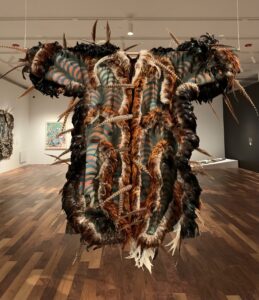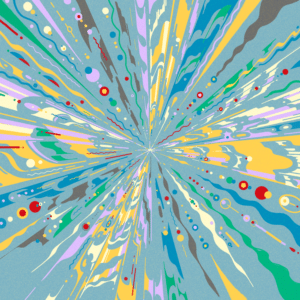A thoughtful review from the The Boston Globe discusses “Collecting Stories: Native American Art”—an exhibition that seeks to rethink the Museum of Fine Arts, Boston’s under-explored collection of indigenous objects. The critic discusses the museum’s acknowledgement of past thinking as well as present intentions for its Art of the Americas collection.
In a little side gallery at the Museum of Fine Arts right now, there’s a thing — a monstrous, silver-plated, hideous-in-every-way thing — called the “Progress Vase,” but really, there’s nothing about it that isn’t regressive in one way or another. From its garish, glinty, high-baroque stylings to its declaration of what “progress” actually is, it’s a monument to terrible old ideas, perfectly embalmed.
It was made in 1875 by local silversmiths Reed & Barton as a centerpiece of the 1876 Centennial International Exhibition in Philadelphia. Being a product of its time is its only excuse. A plinth on its left represents the 19th century with a bucolic scene of ladies in long gowns, their children lolling on the lawn, reading peacefully; it invokes the enlightened civility of high-Classicism, complete with Roman laurels. On its right, you’ll find the 15th century, where bare-chested Native Americans — a description of the day describes them, absurdly, as “Aztecs” — either perch on a wild horse or clutch a spear and a shield (which looks vaguely Pacific-Islander), clearly in violent pursuit of something, or someone.
Whatever high craftsmanship it represents, it’s artless in its implication: that “progress” is not only toward something, but away from something else. Its description calls the Native American figures “primitive . . . savage . . . thinking of nothing but war.” Never mind, I suppose, that the bulk of the savagery of colonial conquest came from the conquerors, with their wholesale genocidal agenda. That’s the little detail that “progress” often leaves out.
So what on earth is it doing here, in an enlightened contemporary institution where public education is paramount? The answer is: Exactly what it should be. Like at the Centennial exhibition, the vase is a centerpiece — now in “Collecting Stories: Native American Art,” the first of three extended exhibitions in which the museum dives deeply into an under-explored trove of its Art of the Americas collections. Unlike at the Centennial, the vase’s ungainly, cringe-inducing presence here is exactly the point (“We’re responsible for telling the full story, however painful or uncomfortable it may be,” said co-curator Layla Bermeo).







